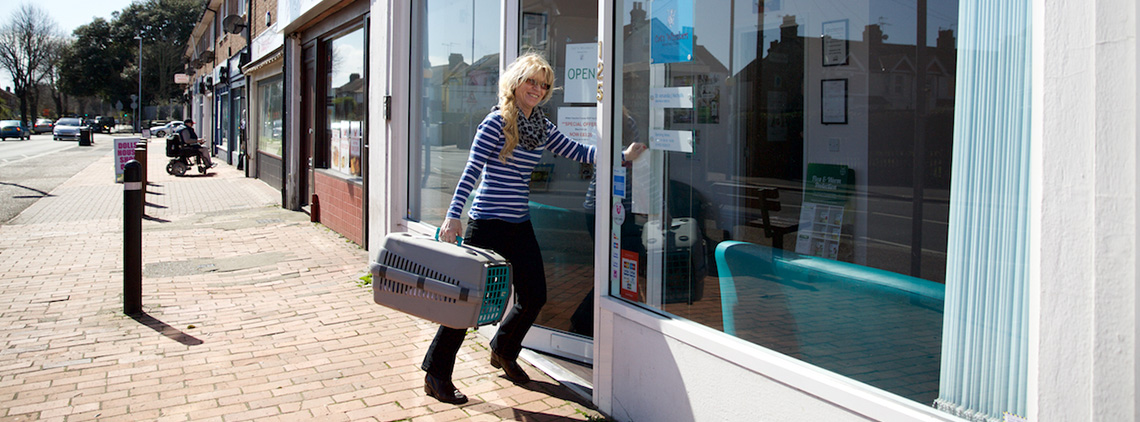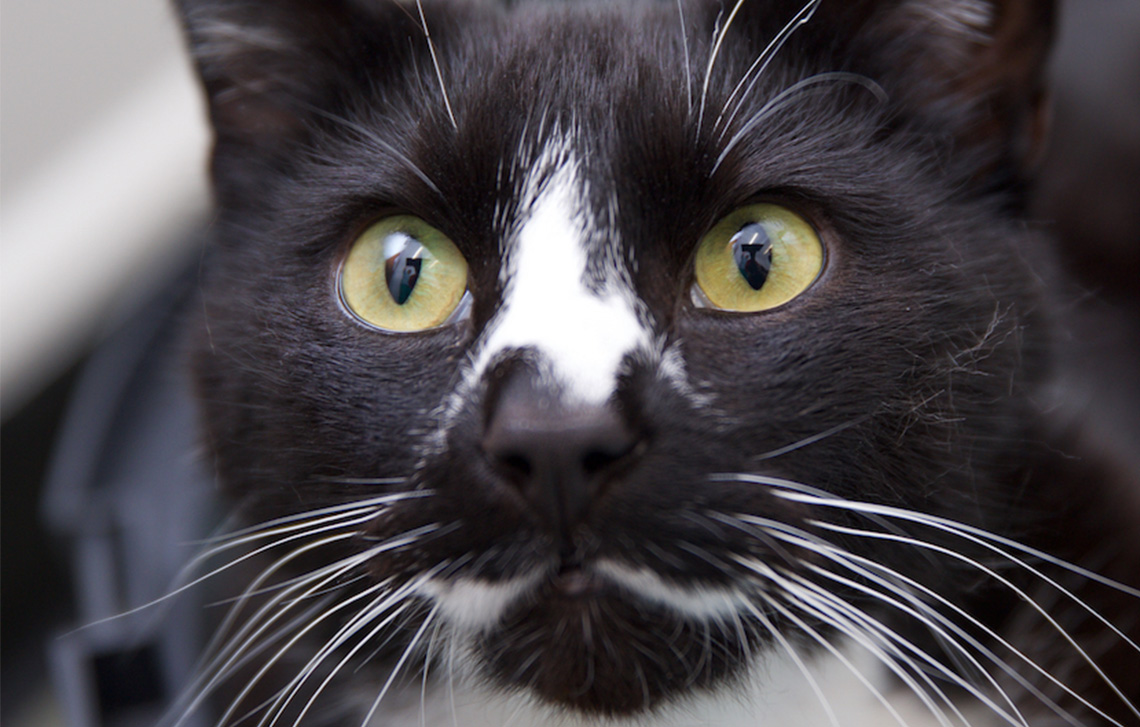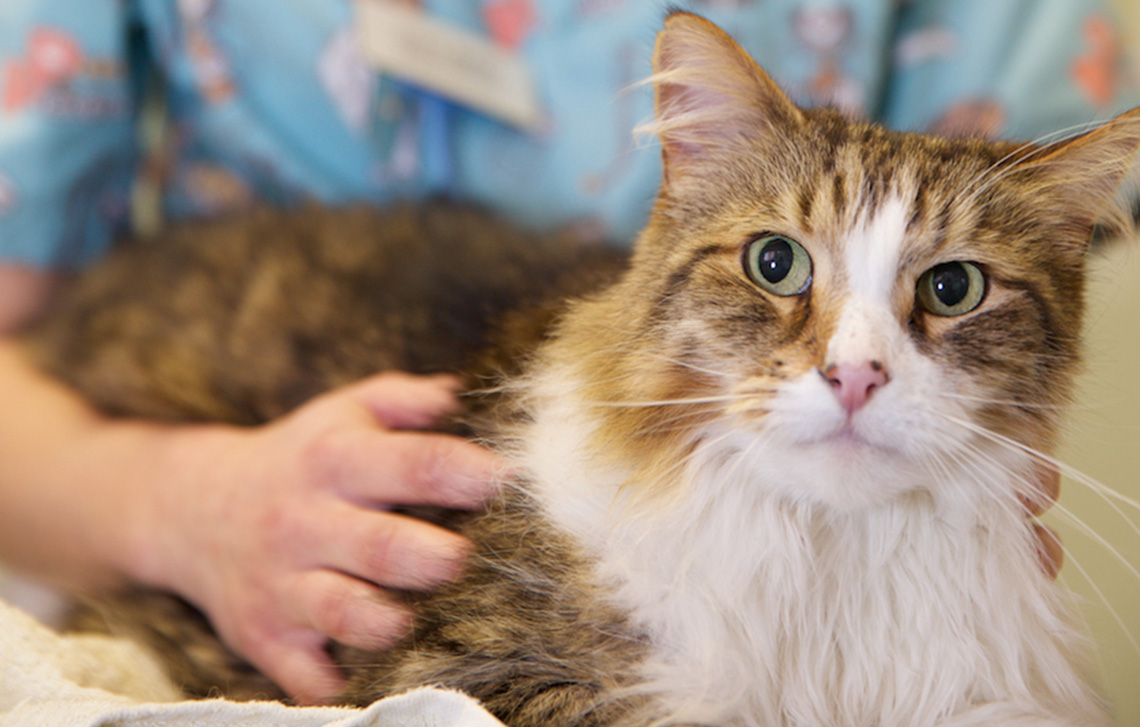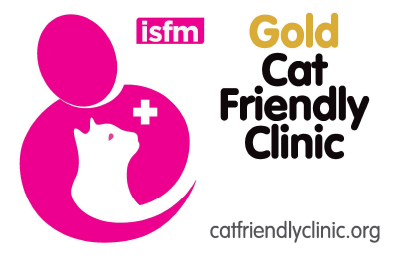
Transporting your cat to the vets is the first step in your cat’s appointment. The journey to the vets can often be stressful for cats meaning that they arrive at the surgery already distressed! There are many potential stressors that a cat can encounter on a trip to the vets, from the unfamiliar carrier, bumpy… Read more »
Transporting your cat to the vets is the first step in your cat’s appointment. The journey to the vets can often be stressful for cats meaning that they arrive at the surgery already distressed! There are many potential stressors that a cat can encounter on a trip to the vets, from the unfamiliar carrier, bumpy car journey, to the sights and sounds of the waiting room and being handled by an unfamiliar person.
Fortunately there are steps you can take to help your cat feel more comfortable about their journey to the vets, and hopefully have a stress free visit. This important for both you and your cat, as cats will pick up on our emotions if we are stressed and anxious about the visit.
The steps you take to ensure your cat’s journey to the vets is stress free will enable the cat to arrive at the vets as calm and as relaxed as possible. This is important as a relaxed cat will be more willing to accept an examination by our vets, meaning we can give your cat a thorough examination and you can both get the most out of the consultation.
The Carrier
Often the carrier lives in the shed or the loft and only makes a dusty appearance the day of a visit to the vets. If you don’t have a carrier or are thinking about buying a new one, here are a few tips:
- Ensure the carrier is sturdy enough to hold your cat safely (particularly if you have a larger cat!)
- Carriers that have a front and top opening are best as it allows two exits for the cat. An ideal carrier has a removable top half so the cat can remain in the bottom half to be examined if they wish.
- One of the first steps you can take is to make the carrier less of a threat. It can be introduced and made to be ‘part of the furniture’. It may sound unlikely, but cats can be trained to feel more comfortable in a carrier and it has been shown that this training can help reduce stress levels in cats! This may have to be done slowly and in several steps-building up to your cat feeling comfortable in the carrier.
- Keep the carrier in an accessible area that is one of the cats preferred places and place familiar bedding, toys and treats inside. You can also spray Feliway pheromone spray (remove any treats first!) in the carrier but leave for at least 15 minutes before allowing access for your cat. You can also transfer your cat’s scent to the carrier- rub a soft cloth around your cats face then wipe the cloth around the basket-this takes your cat’s scent and transfers it to the carrier. Leave the door open so that your cat can enter at their own free will. The training can be gradually built up to a point where the cat feels comfortable in the carrier with the door shut. This may take weeks to achieve but the time and patience you invest will be worth the effort when your cat can travel more comfortably in the carrier.
You can use a method of rewarding with treats or toys /play to reinforce the training.
See the link below for a great guide on how to carrier train your cat:
https://icatcare.org/advice/how-guides/how-train-your-cat-use-cat-carrier
In an Emergency
If you need to get your cat to the vets in an emergency and he / she is not used to the carrier you can try the following steps:
- Place the carrier in a room your cat is comfortable in, with the carrier door open
- Place some familiar bedding / toys inside
- Consider using Feliway feline facial pheromone (leave 15 minutes before offering the basket to the cat)
- If the carrier has a top opening or a removable top half, you could wrap your cat in a fluffy towel or blanket and gently lower them in.
The Journey
Here are some tips to make the car trip less stressful for your cat:
- Cats can often suffer from motion sickness so it’s advisable to withhold food for 2 hours before the journey.
- Carry the carrier with 2 hands to avoid your cat swinging back and forth!
- Before putting in your cats familiar bedding, line the carrier with an absorbent pad incase of any accident. It may be beneficial to have some spare bedding with you just in case.
- Ensure the carrier is well secured in the car, preferably with a seatbelt
- Take a blanket or towel (sprayed with Feliway) to cover the carrier with if you feel your cat will feel more secure covered up. You can adjust the covering if your cat wants to look out!
- Try to stay as calm as you can so your cat does not pick up on any stress you may be feeling
- Allow plenty of time for your journey so that you don’t end up stressed and rushing, as this will be picked up by your cat
We can help!
If your cat has been upset by previous visit or is very anxious please call us before the appointment to discuss how we can help.







